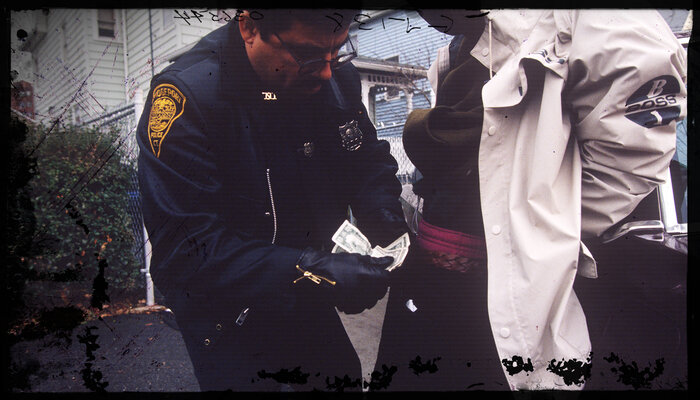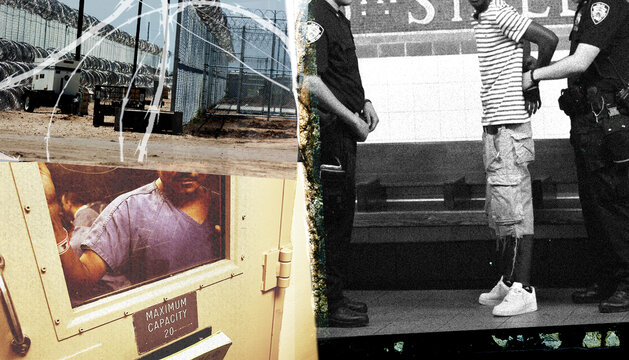
Race, Mass Incarceration, and the Disastrous War on Drugs
Unravelling decades of racially biased anti-drug policies is a monumental project.

Part of
This essay is part of the Brennan Center’s series examining the punitive excess that has come to define America’s criminal legal system.
I have a long view of the criminal punishment system, having been in the trenches for nearly 40 years as an activist, lobbyist, legislative counsel, legal scholar, and policy analyst. So I was hardly surprised when Richard Nixon’s domestic policy advisor John Ehrlichman revealed in a 1994 interview that the “War on Drugs” had begun as a racially motivated crusade to criminalize Blacks and the anti-war left.
“We knew we couldn’t make it illegal to be either against the war or blacks, but by getting the public to associate the hippies with marijuana and blacks with heroin and then criminalizing them both heavily, we could disrupt those communities. We could arrest their leaders, raid their homes, break up their meetings, and vilify them night after night in the evening news. Did we know we were lying about the drugs? Of course we did,” Ehrlichman said.
Before the War on Drugs, explicit discrimination — and for decades, overtly racist lynching — were the primary weapons in the subjugation of Black people. Then mass incarceration, the gradual progeny of a number of congressional bills, made it so much easier. Most notably, the 1984 Comprehensive Crime Control and Safe Streets Act eliminated parole in the federal system, resulting in an upsurge of geriatric prisoners. Then the 1986 Anti-Drug Abuse Act established mandatory minimum sentencing schemes, including the infamous 100-to-1 ratio between crack and powder cocaine sentences. Its expansion in 1988 added an overly broad definition of conspiracy to the mix. These laws flooded the federal system with people convicted of low-level and nonviolent drug offenses.
During the early 1990s, I walked the halls of Congress lobbying against various omnibus crime bills, which culminated in the granddaddy of them all — the Violent Crime Control and Safe Streets Act of 1994. This bill featured the largest expansion of the federal death penalty in modern times, the gutting of habeas corpus, the evisceration of the exclusionary rule, the trying of 13-year-olds as adults, and 100,000 new cops on the streets, which led to an explosion in racial profiling. It also included the elimination of Pell educational grants for prisoners, the implementation of the federal three strikes law, and monetary incentives to states to enact “truth-in-sentencing” laws, which subsidized an astronomical rise in prison construction across the country, lengthened the amount of time to be served, and solidified a mentality of meanness.
The prevailing narrative at the time was “tough on crime.” It was a narrative that caused then-candidate Bill Clinton to leave his presidential campaign trail to oversee the execution of a mentally challenged man in Arkansas. It was the same narrative that brought about the crack–powder cocaine disparity, supported the transfer of youth to adult courts, and popularized the myth of the Black child as “superpredator.”
With the proliferation of mandatory minimum sentences during the height of the War on Drugs, unnecessarily lengthy prison terms were robotically meted out with callous abandon. Shockingly severe sentences for drug offenses — 10, 20, 30 years, even life imprisonment — hardly raised an eyebrow. Traumatizing sentences that snatched parents from children and loved ones, destabilizing families and communities, became commonplace.
Such punishments should offend our society’s standard of decency. Why haven’t they? Most flabbergasting to me was the Supreme Court’s 1991 decision asserting that mandatory life imprisonment for a first-time drug offense was not cruel and unusual punishment. The rationale was ludicrous. The Court actually held that although the punishment was cruel, it was not unusual.
The twisted logic reminded me of another Supreme Court case that had been decided a few years earlier. There, the Court allowed the execution of a man — despite overwhelming evidence of racial bias — because of fear that the floodgates would be opened to racial challenges in other aspects of criminal sentencing as well. Essentially, this ruling found that lengthy sentences in such cases are cruel, but they are usual. In other words, systemic racism exists, but because that is the norm, it is therefore constitutional.
In many instances, laws today are facially neutral and do not appear to discriminate intentionally. But the disparate treatment often built into our legal institutions allows discrimination to occur without the need of overt action. These laws look fair but nevertheless have a racially discriminatory impact that is structurally embedded in many police departments, prosecutor’s offices, and courtrooms.
Since the late 1980s, a combination of federal law enforcement policies, prosecutorial practices, and legislation resulted in Black people being disproportionately arrested, convicted, and imprisoned for possession and distribution of crack cocaine. Five grams of crack cocaine — the weight of a couple packs of sugar — was, for sentencing purposes, deemed the equivalent of 500 grams of powder cocaine; both resulted in the same five-year sentence. Although household surveys from the National Institute for Drug Abuse have revealed larger numbers of documented white crack cocaine users, the overwhelming number of arrests nonetheless came from Black communities who were disproportionately impacted by the facially neutral, yet illogically harsh, crack penalties.
For the system to be just, the public must be confident that at every stage of the process — from the initial investigation of crimes by police to the prosecution and punishment of those crimes — people in like circumstances are treated the same. Today, however, as yesterday, the criminal legal system strays far from that ideal, causing African Americans to often question, is it justice or “just-us?”
Fortunately, the tough-on-crime chorus that arose from the War on Drugs is disappearing and a new narrative is developing. I sensed the beginning of this with the 2008 Second Chance Reentry bill and 2010 Fair Sentencing Act, which reduced the disparity between crack and powder cocaine. I smiled when the 2012 Supreme Court ruling in Miller v. Alabama came out, which held that mandatory life sentences without parole for children violated the Eighth Amendment’s prohibition against cruel and unusual punishment. In 2013, I was delighted when Attorney General Eric Holder announced his Smart on Crime policies, focusing federal prosecutions on large-scale drug traffickers rather than bit players. The following year, I applauded President Obama’s executive clemency initiative to provide relief for many people serving inordinately lengthy mandatory-minimum sentences. Despite its failure to become law, I celebrated the Sentencing Reform and Corrections Act of 2015, a carefully negotiated bipartisan bill passed out of the Senate Judiciary Committee in 2015; a few years later some of its provisions were incorporated as part of the 2018 First Step Act. All of these reforms would have been unthinkable when I first embarked on criminal legal system reform.
But all of this is not enough. We have experienced nearly five decades of destructive mass incarceration. There must be an end to the racist policies and severe sentences the War on Drugs brought us. We must not be content with piecemeal reform and baby-step progress.
Indeed, rather than steps, it is time for leaps and bounds. End all mandatory minimum sentences and invest in a health-centered approach to substance use disorders. Demand a second-look process with the presumption of release for those serving life-without-parole drug sentences. Make sentences retroactive where laws have changed. Support categorical clemencies to rectify past injustices.
It is time for bold action. We must not be satisfied with the norm, but work toward institutionalizing the demand for a standard of decency that values transformative change.
Nkechi Taifa is president of The Taifa Group LLC, convener of the Justice Roundtable, and author of the memoir, Black Power, Black Lawyer: My Audacious Quest for Justice.
More from the Punitive Excess series
-
The American ‘Punisher’s Brain’
U.S. sentencing practices seem especially extreme when compared with countries like Canada, Germany, and the Netherlands. -
Treating All Kids as Kids
Persistent and longstanding racism has fueled harsher treatment of young Black people in the justice system. -
What Did You Call Me?
An incarcerated person writes about how dehumanizing language like “inmate” is destructive.



